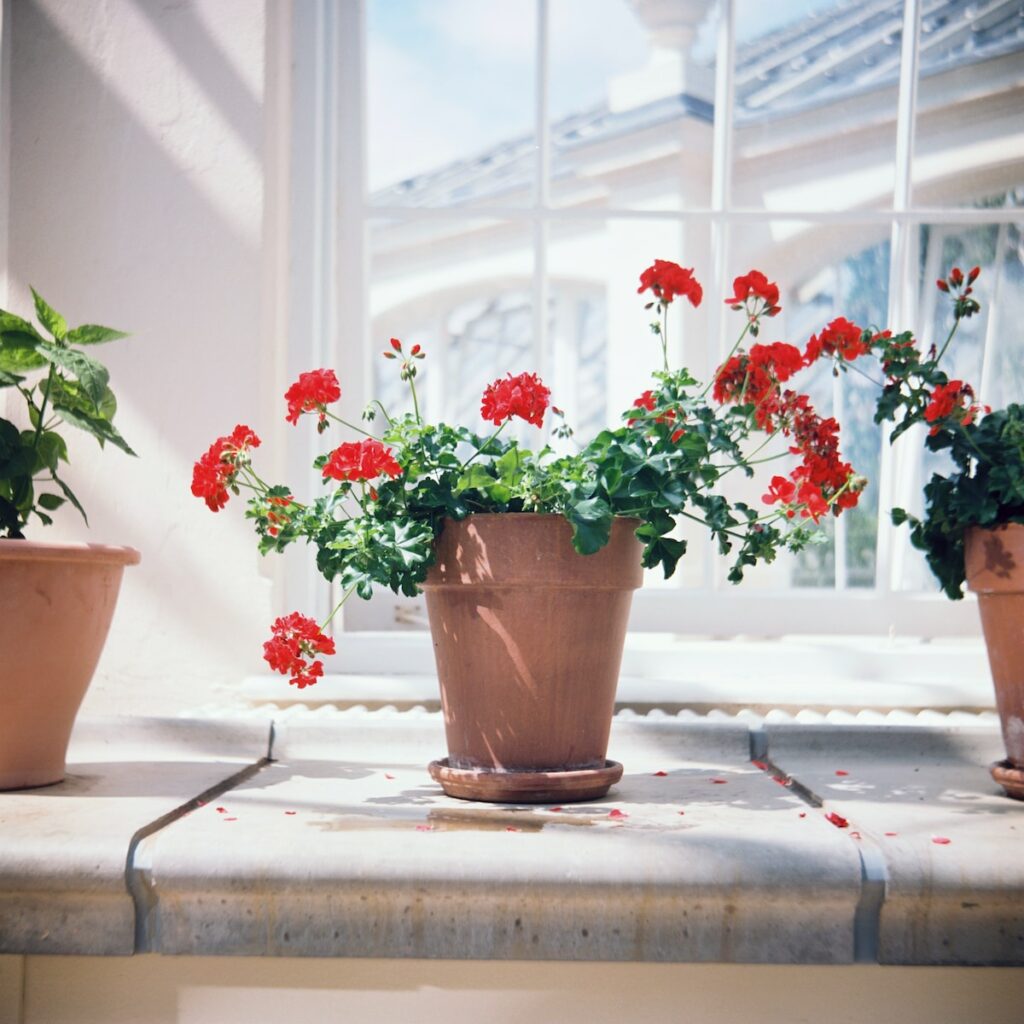
Geraniums are a popular flowering plant that can add color and beauty to any garden. However, many gardeners may struggle with determining the proper watering schedule for their geraniums. While it may seem like a simple task, over or under-watering can cause damage to the plant and affect its growth and overall health.
So, how often should you water geraniums? The answer may vary depending on several factors, such as the climate, soil type, and the size of the pot or garden bed. It’s important to keep in mind that geraniums prefer well-draining soil and do not like to sit in water. Therefore, it’s essential to allow the soil to dry out slightly between watering sessions to prevent root rot and other issues.
As a knowledgeable gardener, understanding the proper watering schedule for geraniums can help ensure their success. In this article, we will explore various factors that affect the watering needs of geraniums and provide clear guidance on how often to water these beautiful plants.
Table of Contents
Understanding Geraniums
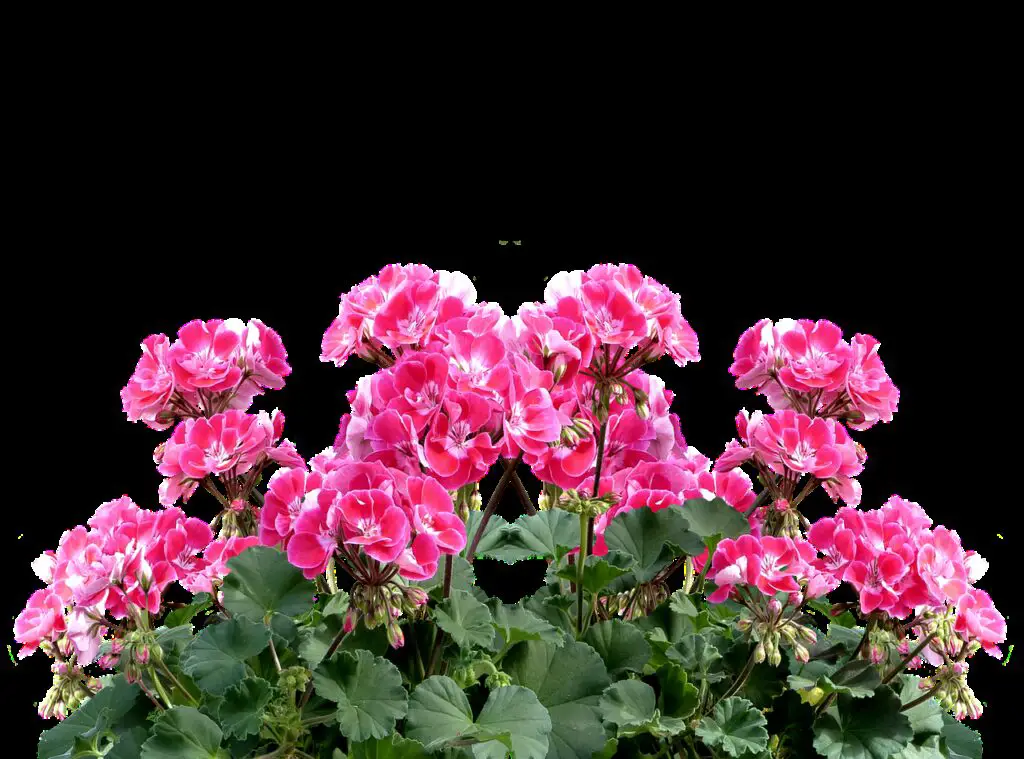
Geraniums are a popular choice among gardeners due to their vibrant blooms and easy-to-care-for nature. These plants are available in a variety of types, including annuals, perennials, and biennials. Understanding the type of geranium you have is important when it comes to watering.
Geraniums are drought-tolerant plants, which means they can survive in dry conditions. However, they also require adequate water to thrive. Overwatering can lead to root rot and other problems, while underwatering can cause the plant to wilt and die.
The frequency of watering geraniums depends on several factors, including the type of geranium, the size of the pot, and the environment in which the plant is growing. In general, geraniums should be watered when the top inch of soil feels dry to the touch.
Perennial geraniums require less water than annuals, as they have deeper roots and can access water from deeper in the soil. It is also important to note that geraniums grown in pots may require more frequent watering than those grown in the ground, as pots tend to dry out more quickly.
In summary, understanding the type of geranium you have and monitoring the soil moisture level is key to properly watering your plants. With the right care, your geraniums can thrive and provide beautiful blooms for years to come.
Ideal Conditions for Geraniums
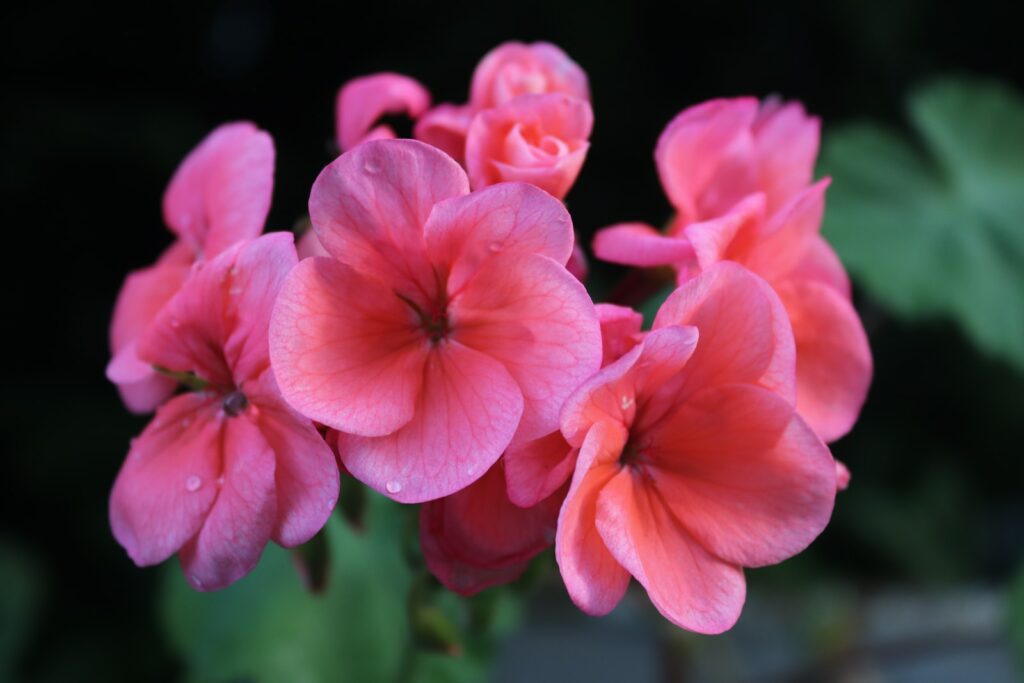
Soil and Climate Requirements
Geraniums thrive in well-draining soil that is rich in organic matter. They prefer a soil pH range between 6.0 and 7.5. Sandy loam or loamy soils are ideal for geraniums as they provide good drainage while retaining moisture. Geraniums also require a moderate amount of water to grow and bloom. Overwatering can lead to root rot, while underwatering can cause the leaves to wilt and drop.
Geraniums grow best in moderate climates with mild temperatures. They can tolerate a wide range of temperatures, but prefer temperatures between 60-75°F (15-24°C) during the day and 50-60°F (10-15°C) at night. Geraniums are also adaptable to different levels of humidity, but prefer moderate humidity levels.
Temperature and Humidity Preferences
Geraniums grow best in full sun, but can also tolerate partial shade. In hot climates, geraniums may require some shade during the hottest part of the day to prevent leaf scorch. During the winter months, geraniums require less water and can tolerate cooler temperatures.
In summary, the ideal conditions for growing geraniums include well-draining soil with a pH range between 6.0 and 7.5, moderate watering, and moderate temperatures between 60-75°F (15-24°C) during the day and 50-60°F (10-15°C) at night. Geraniums prefer moderate humidity levels and can grow in full sun or partial shade.
Watering Geraniums
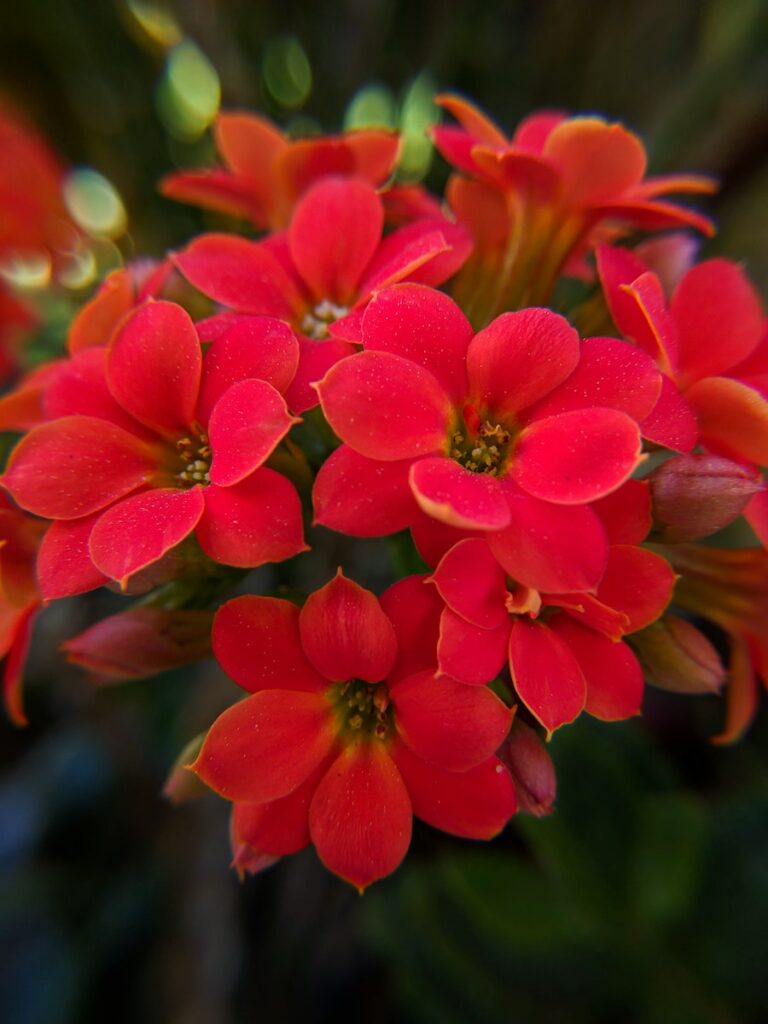
Frequency of Watering
Geraniums require regular watering to thrive, but over-watering can cause root rot and other issues. It is best to water geraniums when the top inch of soil feels dry to the touch. This means that the frequency of watering may vary depending on the climate, humidity, and other factors. In general, geraniums should be watered every 5-7 days during the growing season and every 10-14 days during the dormant season.
Amount of Water Needed
When watering geraniums, it is important to water deeply to encourage deep root growth. This means that the soil should be moistened to a depth of 6-8 inches. The amount of water needed will depend on the size of the pot, the type of soil, and the climate. A good rule of thumb is to water until water starts to drain out of the bottom of the pot.
Signs of Overwatering and Underwatering
Over-watering can cause root rot, wilting leaves, and yellowing leaves. On the other hand, under-watering can cause wilting and drooping leaves. To avoid these issues, it is important to monitor the soil moisture regularly and adjust the watering frequency as needed. A moisture meter can be helpful in determining when to water.
Tips for Watering Geraniums
Here are some tips for watering geraniums:
- Water in the morning or evening when the temperatures are cooler to avoid evaporation.
- Use room temperature water to avoid shocking the roots.
- Avoid getting water on the leaves, as this can lead to fungal issues.
- If using a saucer under the pot, make sure to empty it after watering to avoid standing water.
- If going on vacation, make sure to water the geraniums thoroughly before leaving or ask someone to water them for you.
By following these tips and monitoring the soil moisture regularly, you can keep your geraniums healthy and thriving.
Geraniums in Containers
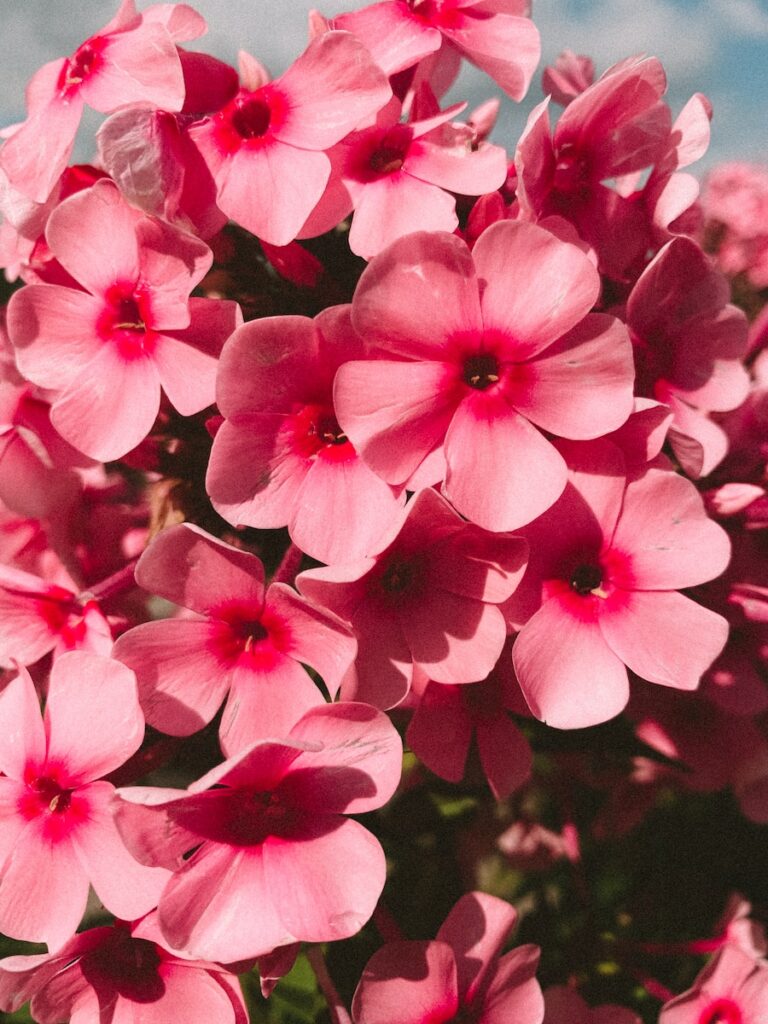
Choosing the Right Container
When it comes to growing geraniums in containers, the container you choose is just as important as the soil and watering schedule. Geraniums thrive in containers that provide good drainage, ample space for their roots to grow, and plenty of room for water to evaporate.
If you’re growing geraniums in containers outdoors, choose a container that’s appropriate for the size of the plant. Smaller containers are best for smaller plants, while larger containers are better for larger plants. Hanging baskets are also a great option for geraniums, as they allow for good drainage and air circulation.
Watering Geraniums in Pots
Geraniums in pots require regular watering to stay healthy. It’s important to water geraniums deeply and thoroughly, but not too frequently. Overwatering can lead to root rot and other problems, while underwatering can cause the plant to become bone dry and wilt.
A good rule of thumb is to water geraniums when the top inch of soil feels dry to the touch. Depending on the size of the container and the weather conditions, this may be once a week or more. When watering, be sure to water the soil directly and avoid getting water on the leaves, as this can lead to disease.
Repotting Geraniums
Over time, geraniums will outgrow their containers and may need to be repotted. When repotting, choose a container that’s one size larger than the current container and use fresh potting soil.
To repot, gently remove the plant from its current container and loosen the roots. Place the plant in the new container and fill in with fresh soil, being sure to firm the soil around the roots. Water the plant thoroughly after repotting and continue to water as needed based on the plant’s size and growing conditions.
Overall, growing geraniums in containers can be a rewarding experience, as long as you choose the right container, water the plant properly, and repot as needed. With these tips in mind, your geraniums are sure to thrive in pots or hanging baskets for years to come.
Additional Care for Geraniums
In addition to proper watering, geraniums require some additional care to thrive. Here are some tips to keep your geraniums healthy:
Fertilizer
Geraniums benefit from regular fertilization. Use a balanced fertilizer with equal amounts of nitrogen, phosphorus, and potassium. Fertilize every two to three weeks during the growing season, and reduce fertilization during the winter months when the plant is dormant. Be sure to follow the instructions on the fertilizer package, as over-fertilization can damage the plant.
Roots
Geraniums have shallow roots, so it’s important to avoid over-watering, which can lead to root rot. In addition, geraniums benefit from occasional root pruning. To do this, gently remove the plant from its pot and trim the roots back by about one-third. Repot the plant in fresh soil and water thoroughly.
Other Care Tips
- Deadhead spent blooms regularly to encourage new growth and prolong the blooming period.
- Pinch back leggy stems to encourage bushier growth.
- Keep an eye out for pests such as spider mites and aphids, and treat promptly with an insecticidal soap or neem oil.
- Geraniums prefer bright, indirect light and can be grown indoors or outdoors, depending on the climate.
By following these additional care tips, you can help your geraniums thrive and enjoy their beautiful blooms for years to come.